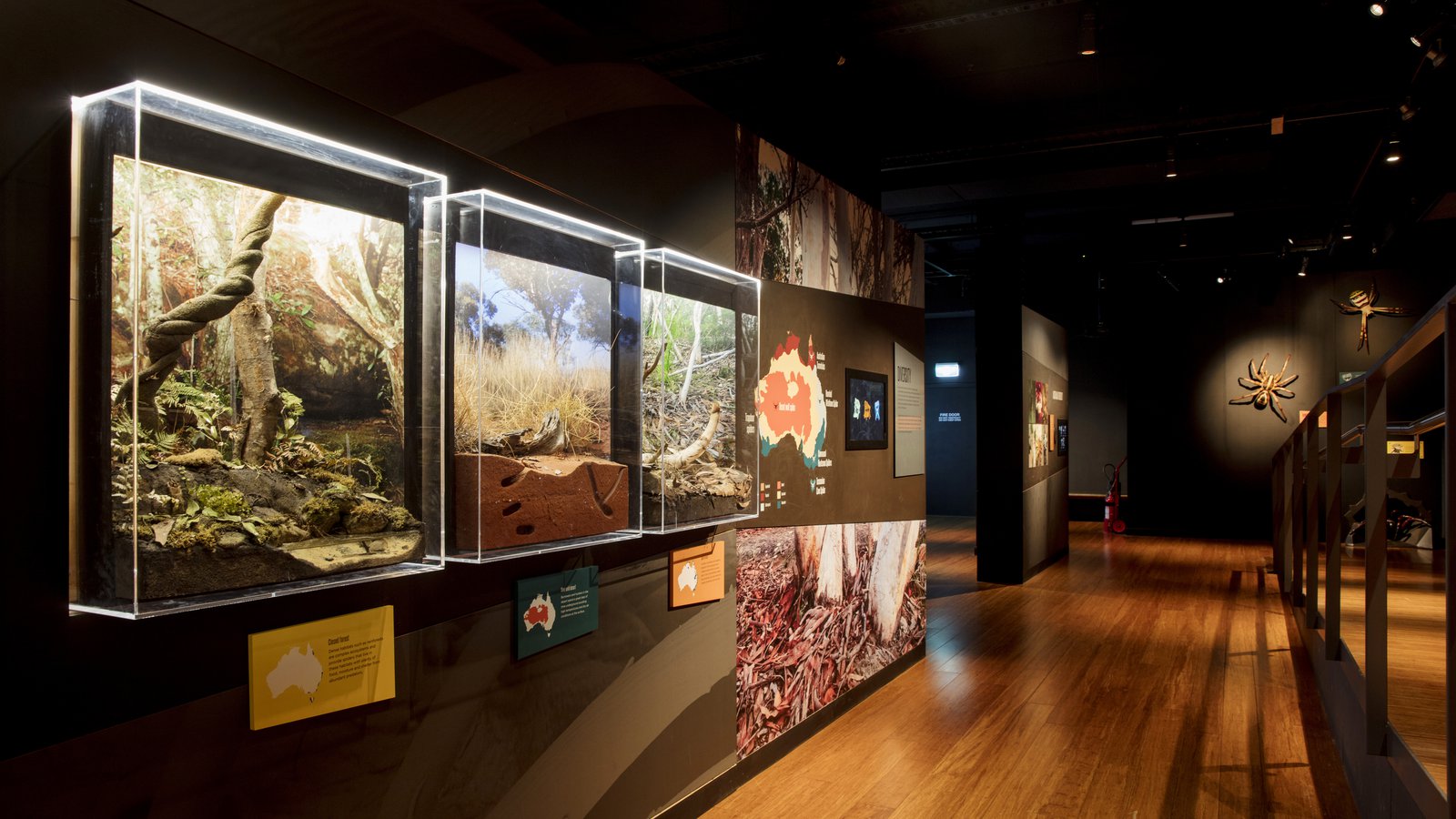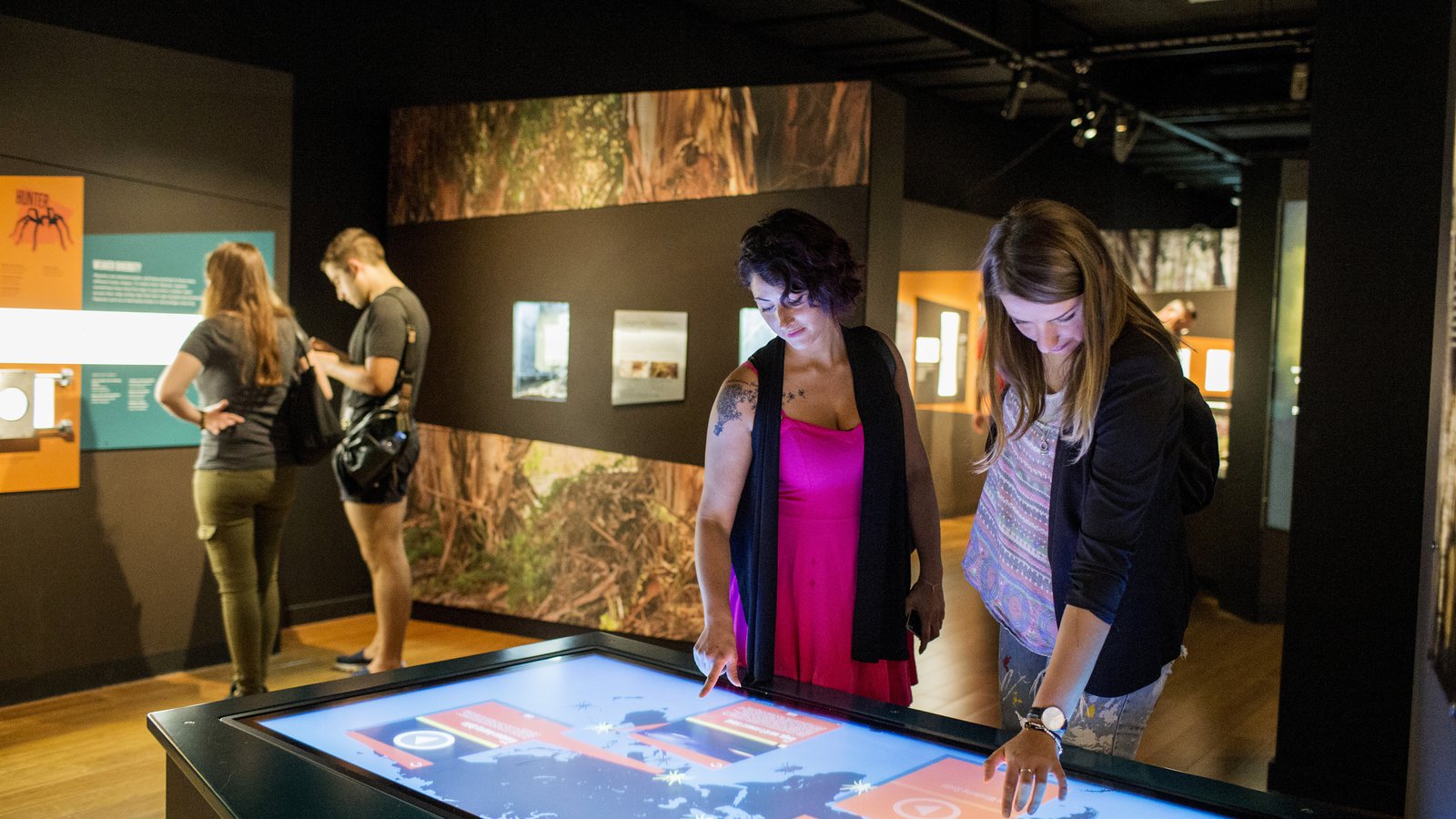Touring exhibition: Spiders – From Fear to Fascination
Come face-to-face with over 250 real spider specimens and live exhibits!

Spiders – From Fear to Fascination is a face-to-face interactive encounter with over 250 real spider specimens, live exhibits and rigorous contemporary science. This combination of immersion and information showcases the latest spider science that allows the visitor an up-close glimpse into the fascinating world of spiders.
Download the prospectus
Scope & themes
Touring itinerary
- 16 June 2018 to 6 January 2019 – Royal Ontario Museum
- 18 April to 2 September 2019 – Montreal Science Centre
- 17 June to 29 October 2023 – North Carolina Museum of Natural Sciences, Raleigh, North Carolina, USA
- 10 February to 5 May 2024 – Fernbank Museum of Natural History, Atlanta, Georgia, USA
- 28 September 2024 to 5 January 2025 - The Witte Museum, San Antonio, Texas, USA
Watch the spiders come to life!
Scan spiders and image tokens using the app to bring them to life.
Download the appMake an enquiry
For more information on the Australian Museum touring exhibitions, please contact:
Louise Teteris, Touring Exhibitions Coordinator, Australian Museum
Christi Klingelhefer, Evergreen Exhibitions via email or call +1 210 582 0015




















